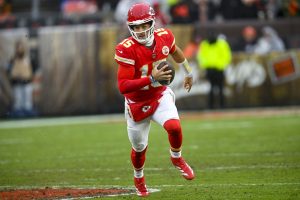Time that Total Solar Eclipse will be visible in SW KS

Garden City, KS(westernkansasnews.com) If you’ve been living under a rock Monday August 21 will be a special event, a total solar eclipse will be seen over the United States.
The last total solar eclipse to be seen in the U.S. was July 11, 1991 and it was only seen in Hawaii. The last one seen in the contiguous 48 states was February 26, 1979.
A total solar eclipse is when the moon moves between the sun and Earth, lasting for up to about three hours from beginning to end.
According to timeanddate.com the eclipse will be visible in southwest Kansas beginning about 11:30 a.m. with the partial eclipse. The maximum eclipse will be seen at 12:58 p.m. The partial eclipse will end about 2:27 p.m.
Below are safety tips provided by https://eclipse2017.nasa.gov/safety
Looking directly at the sun is unsafe except during the brief total phase of a solar eclipse (“totality”), when the moon entirely blocks the sun’s bright face, which will happen only within the narrow path of totality.
The only safe way to look directly at the uneclipsed or partially eclipsed sun is through special-purpose solar filters, such as “eclipse glasses” (example shown at left) or hand-held solar viewers. Homemade filters or ordinary sunglasses, even very dark ones, are not safe for looking at the sun; they transmit thousands of times too much sunlight. Refer to the American Astronomical Society (AAS) Reputable Vendors of Solar Filters & Viewers (link is external) page for a list of manufacturers and authorized dealers of eclipse glasses and handheld solar viewers verified to be compliant with the ISO 12312-2 international safety standard for such products.
- Always inspect your solar filter before use; if scratched or damaged, discard it. Read and follow any instructions printed on or packaged with the filter.
- Always supervise children using solar filters.
- Stand still and cover your eyes with your eclipse glasses or solar viewer before looking up at the bright sun. After looking at the sun, turn away and remove your filter — do not remove it while looking at the sun.
- Do not look at the uneclipsed or partially eclipsed sun through an unfiltered camera, telescope, binoculars, or other optical device.
- Similarly, do not look at the sun through a camera, a telescope, binoculars, or any other optical device while using your eclipse glasses or hand-held solar viewer — the concentrated solar rays will damage the filter and enter your eye(s), causing serious injury.
- Seek expert advice from an astronomer before using a solar filter with a camera, a telescope, binoculars, or any other optical device. Note that solar filters must be attached to the front of any telescope, binoculars, camera lens, or other optics.
-
 If you are within the path of totality (https://go.nasa.gov/2pC0lhe (link is external)), remove your solar filter only when the moon completely covers the sun’s bright face and it suddenly gets quite dark. Experience totality, then, as soon as the bright sun begins to reappear, replace your solar viewer to look at the remaining partial phases.
If you are within the path of totality (https://go.nasa.gov/2pC0lhe (link is external)), remove your solar filter only when the moon completely covers the sun’s bright face and it suddenly gets quite dark. Experience totality, then, as soon as the bright sun begins to reappear, replace your solar viewer to look at the remaining partial phases. -
Outside the path of totality, you must always use a safe solar filter to view the sun directly.
-
If you normally wear eyeglasses, keep them on. Put your eclipse glasses on over them, or hold your handheld viewer in front of them









